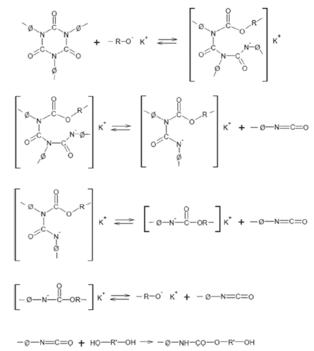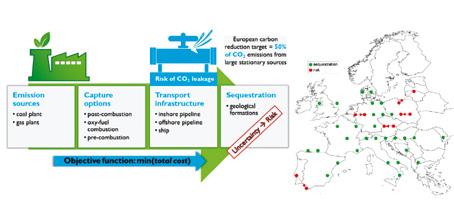D
Valuable secondary raw material by chemical recycling of polyisocyanurate foams Polyurethane rigid foams (PUR) are widely employed materials for flooring and roofing applications in sustainable building and infrastructure projects for lower energy costs. However, due to the growing concern about flammability of foamed materials, which has led to strict building regulations, the use of polyisocyanurate (PIR) foams is steadily growing due to their higher thermal stability and fire resistance than PUR. In this context the rapid rise in the consumption of such materials poses a serious issue for their recycling in terms of economic and environmental perspectives. One of the most popular method for the recycling of polyurethanes (PU) reusable wastes is glycolysis, a transesterification process capable to produce oligomers in the PUs production (Figure 1).
I
I
N
F
O
R
M
A
Research topic: Industrial processes and products DII research group Polymer Engineering Group (PEG)
Michele Modesti michele.modesti@unipd.it Phone: +39 049 8275541
Alessandra Lorenzetti alessandra.lorenzetti@unipd.it Phone: +39 049 8275556
Martina Roso martina.roso@unipd.it Phone: +39 049 8275735
Collaborator: Carlo Boaretti carlo.boaretti@unipd.it
Figure 1. Reaction of isocyanurate and related compounds during glycolysis
The research activity is carried out within the PEG, Polymer Engineering Group. www.peg.dii.unipd.it
In this work we explored the feasibility and optimization of such method, never been applied before for the recycling of PIR foams. The results showed that a glycolysis process in presence of dipropylene glycol, as glycolysis agent, and potassium acetate, as catalyst, can be successfully carried out even with PIR foams with extremely high isocyanate index. Under proper conditions, the highly cross-linked structure of the polymer can be converted into a liquid, single phase, mixture of highly branched oligomers which was suitable to be used in the synthesis of new rigid foams. Due to the high functionality of the glycolysis products and their compatibility with isocyanates, the mechanical properties of specimens based even on high amounts (up to 75%) of glycolysis polyols turned out to be higher or either very close to those of standard specimens based on virgin polyol only (Figure 2).
Figure 2. Compressive strength performance and microstructure of PIR foams containing different percentages of glycolysis-derived polyols
The present work has received funding from the Veneto POR FESR 2014-2020 under the research project entitled «Chemical recycling of polyurethanes systems in the perspective of Circular Economy»
Main research topics: • Nanostructured membranes based on nanofibers via electrospinning • High performance polymeric nanocomposites • Thermal stability and fire behavior of polymeric materials • Design and processing of polymeric materials • Physical and chemical recycling of plastic materials 7


